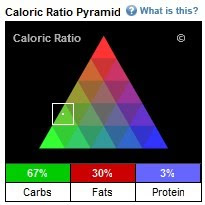
Not many people would swop a night's sleep in a regular bed for a snooze on grass on the side of the road in Woodlands.
Yet a 74-year-old cyclist from Italy is happy to do so.
Meet sprightly Janusz Rivers, who has been cycling solo around the world for the past nine years, getting by on the equivalent of $5 a day and sleeping rough. All this at an age when most people are sitting out their golden years in a comfy chair, not on a tiny leather saddle.
The intrepid (some would say eccentric) bachelor is visiting Singapore for the first time, having flown here from Poland on Tuesday. He is here to start the South-east Asian leg of his seemingly never-ending journey.
He aims to cycle across the Causeway, cover the whole of Malaysia and southern Thailand before returning in April for a month's rest. He will then fly to Papua New Guinea to cycle there and on through Timor Leste, before flying to Australia in early 2011.
Rivers, a retired sports manager, is being put up here by the Ministry of Community Development, Youth and Sports at the Singapore Sports School in Woodlands. Despite having a comfortable room to stay in, he reveals that he left it at midnight on Wednesday to sleep on a patch of grass he had found by the road.
"I always sleep in the open. It's quiet and natural," explains this self-described "citizen of the world" who has no home base.
Rivers hails from Poland originally but moved to Rome in 1979 until the call of the road hit on Dec 31, 1999, and he began his journey. He tours an area for about five months, rests for a month or so in one country he chooses as a base, and then continues.
He claims to have travelled to 115 countries, been kidnapped 30 times and survived a potentially deadly snake bite. What's more, he has made his epic journey on the same US$50 bike he bought when he first set out. The frame is original, but the tyres and gears are changed yearly.
Amazingly, he has not had a single puncture. He credits this to his German puncture-proof tyres, which he changes twice every six months.
Unlike some adventurers, Rivers is not undertaking his journey to raise money for charity or draw attention to himself. He says he is financially comfortable and is doing this just to stay active.
Speaking to Life! at the Singapore Sports School, he recalls the fateful New Year's Eve when he decided he wanted a change in life. "I was sitting at home, eating macaroni and sipping Italian wine, when I thought, 'I'm getting old. What can I do with my life?' "
The next day, he bought a cheap bicycle and jumped on a ferry bound for Lanzarote in the Canary Islands. He says the decision was easy because he is not married and has no children.
From Lanzarote, he went back to Europe and cycled north to Norway in five months. It marked the beginning of his love affair with the open road that he says has taken him 125,000km across the world. He reckons it is the best way to see the world.
Each day, he aims to travel 30km. Every country he visits, he ensures that he has the sanction of the local government. He obtains this by either faxing or calling ahead, and the government usually provides his accommodation and food.
He sticks to the backroads so that he can interact with locals.While traversing the desert in Egypt, he says the local tribes would follow him on their camels to give him food and water. He says he has encountered generosity everywhere, and claims it is almost impossible to spend any money. This is just as well, as his prize possessions on the road consist only of an Italian coffee maker and a small radio.
He names Cuba as his favourite country so far, where he says he was the first tourist to cycle around the island without a police escort.
Rivers' world tour was scheduled to finish at the Beijing Olympics last year, but after taking a fitness test at the Russian space centre and finding that his heart and lungs are strong, he has set his sights on the Rio de Janeiro Olympics in 2016.
Then he plans to stay in a South American village for the rest of his days. But for now, when asked why he keeps on cycling, he says: "I don't want to be found dead in front of the TV."
Source: The Straits Times/By Christian Seiersen
 This is downright infuriating. Perhaps you recall this story: while driving down the road one day, Charles Diaz grew upset at seeing a man riding his bike on a busy street with his 3 year-old son. So he shot him in the head. Thankfully, the bullet narrowly missed his skull, instead getting lodged in the cyclists' helmet. Well, Diaz has just been sentenced for admitting to nearly murdering a man by firing a gun towards his head--and he's received a paltry 4 months in jail.
This is downright infuriating. Perhaps you recall this story: while driving down the road one day, Charles Diaz grew upset at seeing a man riding his bike on a busy street with his 3 year-old son. So he shot him in the head. Thankfully, the bullet narrowly missed his skull, instead getting lodged in the cyclists' helmet. Well, Diaz has just been sentenced for admitting to nearly murdering a man by firing a gun towards his head--and he's received a paltry 4 months in jail.












